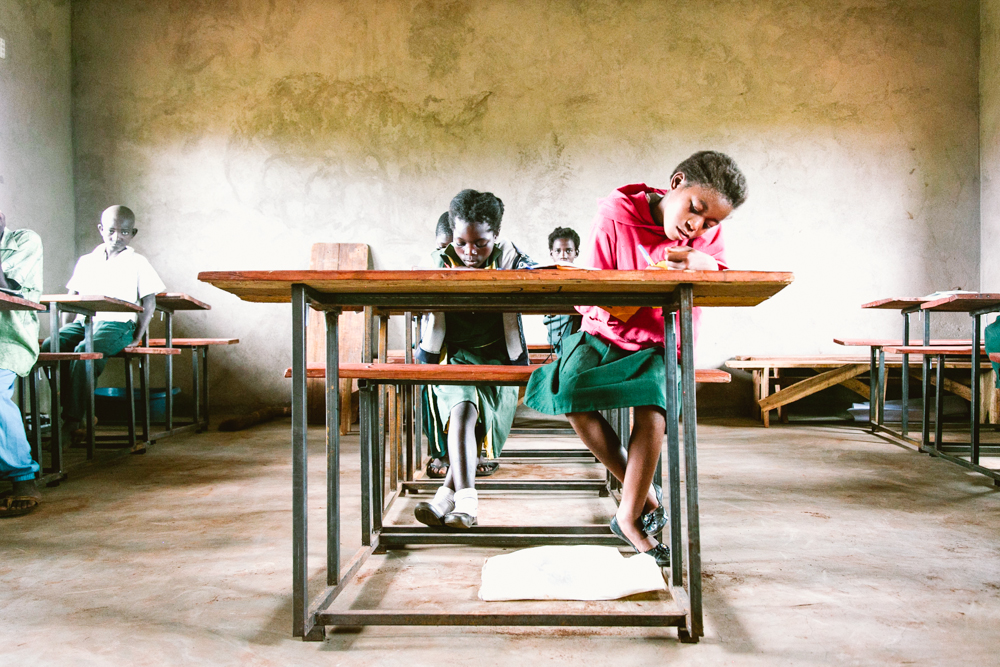Why Gender Equality Is A Conversation For Every Classroom
According to UNESCO’s Institute for Statistics estimation in 2012, while there are 62 million girls out of school around the world, there are still also 59 million boys out of school.
This month, President Obama and First Lady Michelle Obama launched the Let Girls Learn Initiative. Building on the work existing programs and organizations, Let Girls Learn aims to ensure adolescent girls around the world are able to complete their education. The initiative focuses on the 62 million girls – half of whom are adolescent – who are not in school and thus have reduced economic opportunities for the future.
But it’s far from the first initiative for girls’ education—this push has been at the forefront of the international development field in recent years, and it makes sense. According to UNESCO (2013), girls’ education has many positive impacts including the reduction of maternal and child mortality and the improvement of child nutrition. UNESCO (2013) also found that educated women are more likely to find work and furthermore, education narrows pay gaps between men and women.
Impact Network schools are based in rural areas where it is common practice for girls to help around the home. Some wake up very early and stay up late helping to prepare meals, take care of younger children, fetch water, and other tasks. Though many boys help their families with farming, it is less likely to detract from school time or sleep.
We are exploring ways to provide expanded programming for girls. As we empower girls, ensuring that they have access to education, health and information, we must also provide this access to boys. Here’s why we believe providing access to quality education to boys is beneficial to everyone as well:
01 | When gender awareness and inclusion is a conversation in the classroom, it benefits girls and boys alike. Initiatives that empower girls and women also put a huge amount of pressure on girls and women to invest responsibly for their families, provide health care, and ensure that their children get access to education. By educating boys to be sensitive to gender issues, we hold boys and men accountable as partners and community members. For example, in Zambia, programs like SPLASH teach menstrual hygiene management to both boys and girls, and include boys in activities like making homemade pads for girls. By doing so, boys gain greater understanding of girls’ needs and become valuable partners in improving the wellbeing of everyone in their communities.
02 | In the classroom, girls are actually doing better than boys. A recent study found that “with the exception of high-achievers, boys have poorer educational outcomes than girls around the world, independent of social equality indicators.”[1] As we improve access to education for girls, we cannot leave boys behind. In the classroom, this means that having multiple approaches to teaching instruction can help to support all learners. For example, our teachers have integrated art projects into science classes, and divided up their classes into three groups for a math class on counting with one group practicing writing numbers, a second group playing counting games on tablets, and a third group collecting numbers of objects from around the school. Because gender is not the only factor in the classroom, we believe in recognizing that learners have diverse needs and our teachers use these and other creative techniques to ensure that all learners are engaged and motivated.
03 | While education narrows the pay gap between men and women, women are still paid significantly less than men even with similar levels of education. Men also continue to occupy the majority of positions of power in workplaces and within governments. In order to change this, we have to change the next generation’s mindset and we need boys on board. In addition to empowering girls, we must also teach boys to think inclusively, promote opportunities for women and girls, and actively work to create a more equitable world. Of course, women and girls can and will continue to break glass ceilings, but by working collectively, we can accelerate that process and build allies among men and boys. Students in Impact Network schools see variation within leadership positions and teachers actively work to promote gender equity in the classroom. Whether students see female teachers as role models, or have male teachers who promote gender equity in their classrooms, all students are learning more than the content in their lessons—they are learning mutual respect.
In 2014, when Emma Watson spoke at the United Nations, she formally invited men to join this fight saying, “gender equity is your issue too.” It should go without saying that girls need access to education, however, the strongest movements are built through coalitions. Let’s continue to offer this invitation, understanding that together, we can make the world a more equitable place.
[1] University of Missouri-Columbia. (2015, January 26). Girls lead boys in academic achievement globally. ScienceDaily. Retrieved January 28, 2015
LEARN + CONNECT
Learn more about Impact Network
Connect via Facebook, Twitter, and Instagram
FROM THE EDITOR
At Conscious, remarkable people and organizations inspire us, and so we set out to tell stories that highlight human interest stories, global initiatives, innovation, community development, and social impact. You can read more stories like this when you subscribe




